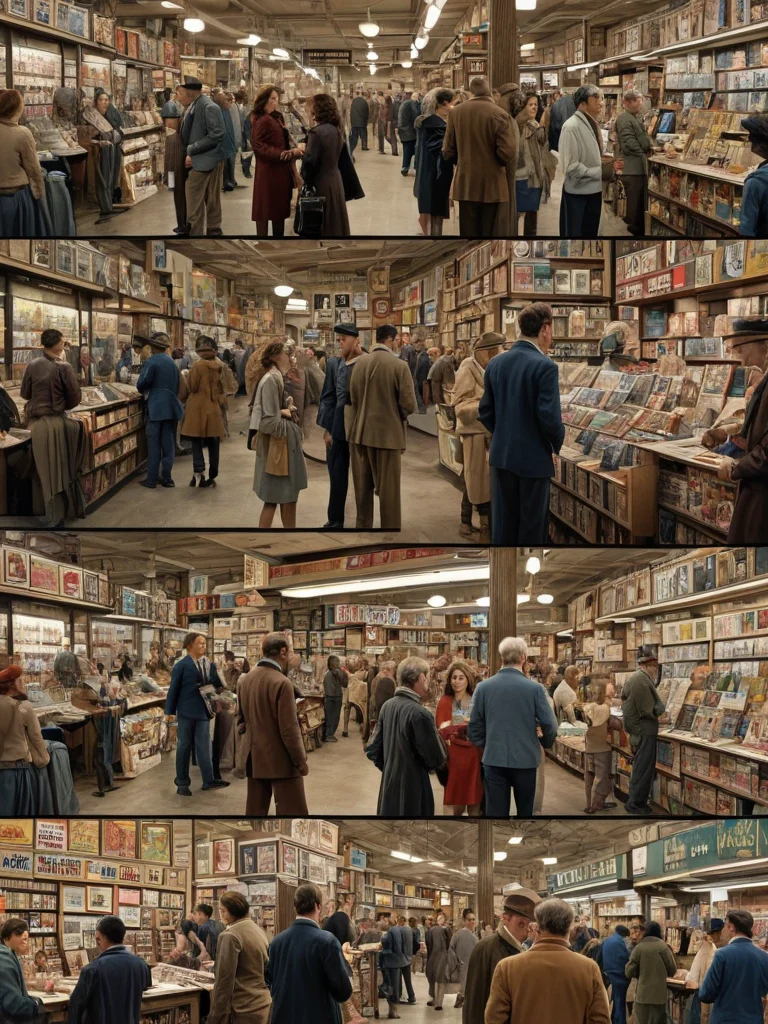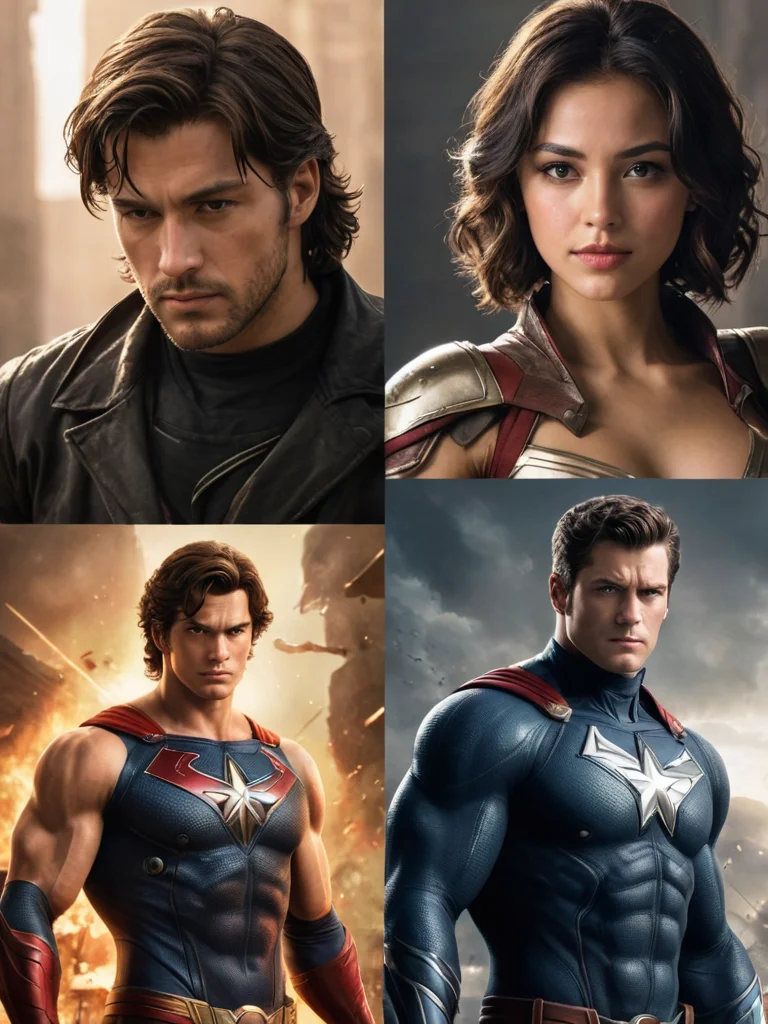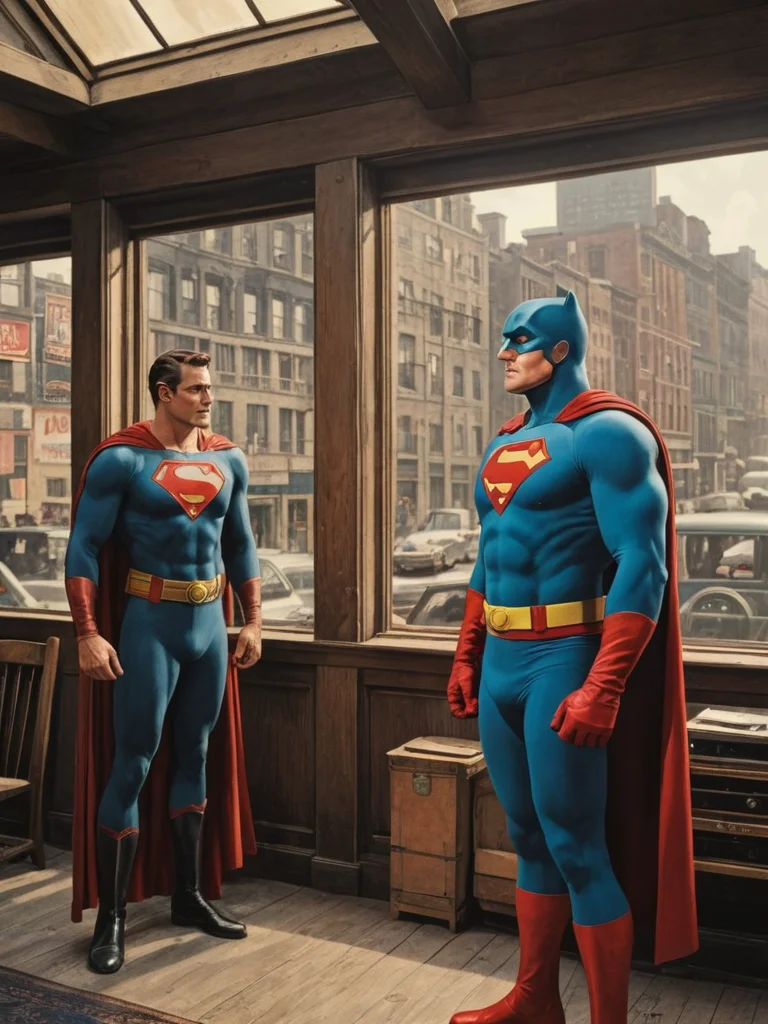Comics are not just pictures with captions; they are a powerful layer of world culture that has gone through a long and fascinating journey from newspaper pages to huge film franchises. Their history spans over a hundred years, and during this time, they have managed to reflect, and at times predict, many important social and political changes. Today, comics are entertainment, art, and a way to talk about complex things in simple language.
From Origins to Superheroes: How Comics Conquered the World and Became Part of Pop Culture

The history of comics begins at the end of the 19th century, when newspapers began to actively use color illustrations to attract readers’ attention. One of the first popular comics was “The Yellow Kid,” which appeared in 1895 in the “New York World” newspaper. This character, created by artist Richard Felton Outcault, wore a yellow nightshirt and expressed his thoughts and feelings directly on it. The success of “The Yellow Kid” led to the appearance of many imitators, and soon comics became an integral part of newspaper culture. It is from this time that, according to historians, the golden age of comics began.
In the 1930s, comics reached a new level – the first superheroes appeared. In 1938, DC Comics released the first issue of “Action Comics” featuring Superman, created by Jerry Siegel and Joe Shuster. Superman became a true phenomenon, and soon other iconic characters followed, such as Batman (1939) and Wonder Woman (1941). These heroes did not just entertain readers; they offered them ideals of justice, courage, and hope during the difficult times of the Great Depression and World War II.
World War II had a huge impact on the themes of comics. Superheroes actively fought Nazism and other enemies of America, inspiring soldiers and supporting the nation’s morale. After the war, the popularity of superheroes somewhat declined, but in the 1960s, they experienced a rebirth thanks to the efforts of publishers like Marvel Comics. Under the leadership of Stan Lee and Jack Kirby, new, more complex, and realistic characters were created, such as Spider-Man, the Hulk, and the X-Men. These heroes were not flawless; they faced personal problems and doubts, which made them more relatable and understandable to readers.
From Newspaper Strips to Graphic Novels: The Evolution and Diversity of Comics (Manga, Webcomics, Independent Comics)

Comics have come a long way from simple newspaper strips to complex and multifaceted graphic novels. Initially, comics were created for mass audience entertainment, but over time, they began to be used for more serious purposes, such as education, propaganda, and self-expression. Various genres and styles of comics emerged, reflecting the diversity of readers’ interests and tastes.
One of the most striking examples of comic evolution is the emergence of graphic novels. A graphic novel is essentially a comic, but longer and more complex in content. It tells a cohesive story, often addressing serious themes and using complex literary devices. One of the first and most famous graphic novels is Art Spiegelman’s “Maus” (1980), which tells the story of the Holocaust from the perspective of a Jewish boy whose parents survived the concentration camps. “Maus” won the Pulitzer Prize and became an important event in the history of comics, proving that they can be not only entertainment but also serious art.
In addition to graphic novels, there are many other types of comics, each with its own characteristics and audience. Manga are Japanese comics, distinguished by their characteristic art style, dynamic plots, and diverse genres. Webcomics are comics published online, allowing creators to experiment with format and interact with readers. Independent comics are created by independent artists, often addressing personal and social themes.
The diversity of comics is vast, and everyone can find something to their taste. These can be superhero stories, science fiction epics, romantic comedies, historical dramas, or autobiographical tales. It is important to understand that comics are not just entertainment for children; they are a powerful storytelling tool that can be used for a wide variety of purposes.
Comics as a Mirror of Society: How the Problems and Values of Different Eras (Racism, Feminism, Ecology) are Reflected in Superheroes and Anti-heroes

Comics have always been a reflection of the society in which they were created. They reflect its values, fears, hopes, and prejudices. The superheroes and anti-heroes who inhabit the pages of comics often become symbols of certain ideas and ideals, and their adventures are metaphors for real social and political problems.
For example, during World War II, superheroes actively fought Nazism, symbolizing the struggle of good against evil. In the 1960s, during the rise of the civil rights movement, comics emerged that addressed the issue of racism and discrimination. One of the first black superheroes was Black Panther (1966), created by Stan Lee and Jack Kirby. He was the king of the fictional African nation of Wakanda, possessing advanced technology and rich resources. Black Panther became a symbol of pride and hope for African Americans, as well as an important step in combating racial stereotypes.
In the 1970s, during the rise of the feminist movement, comics began to pay more attention to female characters. Wonder Woman, created back in 1941, became a symbol of female strength and independence. New female superheroes emerged, such as Ms. Marvel and She-Hulk, who not only possessed superpowers but also faced problems characteristic of women in modern society. In the 1980s and 1990s, comics began to address the issue of ecology and environmental protection. Heroes appeared who fought against environmental pollution and protected animals. Captain Planet (1990) is one of the most famous examples of this kind. This hero was created by Ted Turner and Barbara Pyle and united the powers of five teenagers representing different races and cultures to fight environmental disasters.
Modern comics continue to reflect current social and political issues. They address topics such as gender equality, LGBTQ+ rights, migration, terrorism, and many others. Comics are becoming a platform for discussing complex issues and help readers better understand the world they live in.
More Than Entertainment: How Comics Influence Film, Literature, Fashion, and Other Art Forms. Examples of the Most Successful Adaptations.

The influence of comics on culture is enormous and multifaceted. They not only entertain readers but also inspire artists, writers, directors, and designers. Comics influence film, literature, fashion, music, and other art forms. Their visual style, plot devices, and characters become a source of inspiration for many creative individuals.
One of the most striking examples of the influence of comics on culture is the adaptation of superhero stories into films. The Marvel Cinematic Universe (MCU) has become a true phenomenon, grossing billions of dollars at the box office and winning the hearts of millions of viewers worldwide. The success of the MCU has proven that comics can be not only a source of entertainment but also a profitable business. In addition to Marvel, there are many other successful comic book adaptations, such as films about Batman, Superman, Spider-Man, and the X-Men. These films not only entertain audiences but also raise important social and political issues, touching on themes of morality, justice, and responsibility.
Comics also influence literature. Many writers use elements of comics in their works, such as visual descriptions, dynamic plots, and vivid characters. Graphic novels, as mentioned earlier, have become an important part of modern literature, drawing attention to serious themes and offering new forms of storytelling. Comics also influence fashion. Designers often use images of superheroes and other comic book characters in their clothing and accessories. Comics inspire the creation of bright and original looks that reflect a spirit of freedom, rebellion, and individuality.
The influence of comics on culture continues to grow. They are becoming increasingly popular and in demand, attracting the attention of new readers and viewers. Comics are not just entertainment; they are an important part of our culture that reflects our values, fears, and hopes.
Comics Today and Tomorrow: Industry Development Trends, New Platforms, and Why Picture Stories Continue to Inspire Millions.

The comic industry is constantly evolving, adapting to new technologies and societal changes. Today, comics can be read not only in print but also in digital format on various platforms, such as websites, mobile apps, and online services. This makes comics more accessible and convenient to read anytime, anywhere.
One of the main trends in the development of the comic industry is the growing popularity of webcomics. Webcomics allow creators to publish their work independently, without intermediaries, and interact directly with readers. This opens up new opportunities for creativity and experimentation, and also allows creators to find their audience and earn from their work. Another important trend is the growing popularity of comics among women and people from various ethnic groups. Comics are becoming more diverse and inclusive, reflecting the diversity of society and offering stories that are interesting and important to different people.
The future of comics looks promising. They continue to inspire millions of people around the world, offering them engaging stories, vivid characters, and new perspectives on the world. Comics are not just entertainment; they are a powerful storytelling tool that can be used for a wide variety of purposes. They can entertain, educate, inspire, and provoke thought. It is important to remember that comics are a part of our culture that deserves respect and attention.
Why do picture stories continue to inspire millions of people? Perhaps it’s their simplicity and accessibility. Comics can tell complex stories in a simple and understandable language, using visual imagery and concise text. Perhaps it’s their ability to transport us to other worlds and introduce us to amazing characters. Comics can draw us into adventures, make us laugh and cry, give us hope and inspiration. Ultimately, comics are stories that tell about ourselves, about our dreams and fears, about our values and ideals. And as long as we need stories, comics will continue to live and evolve, inspiring new generations of readers and artists.